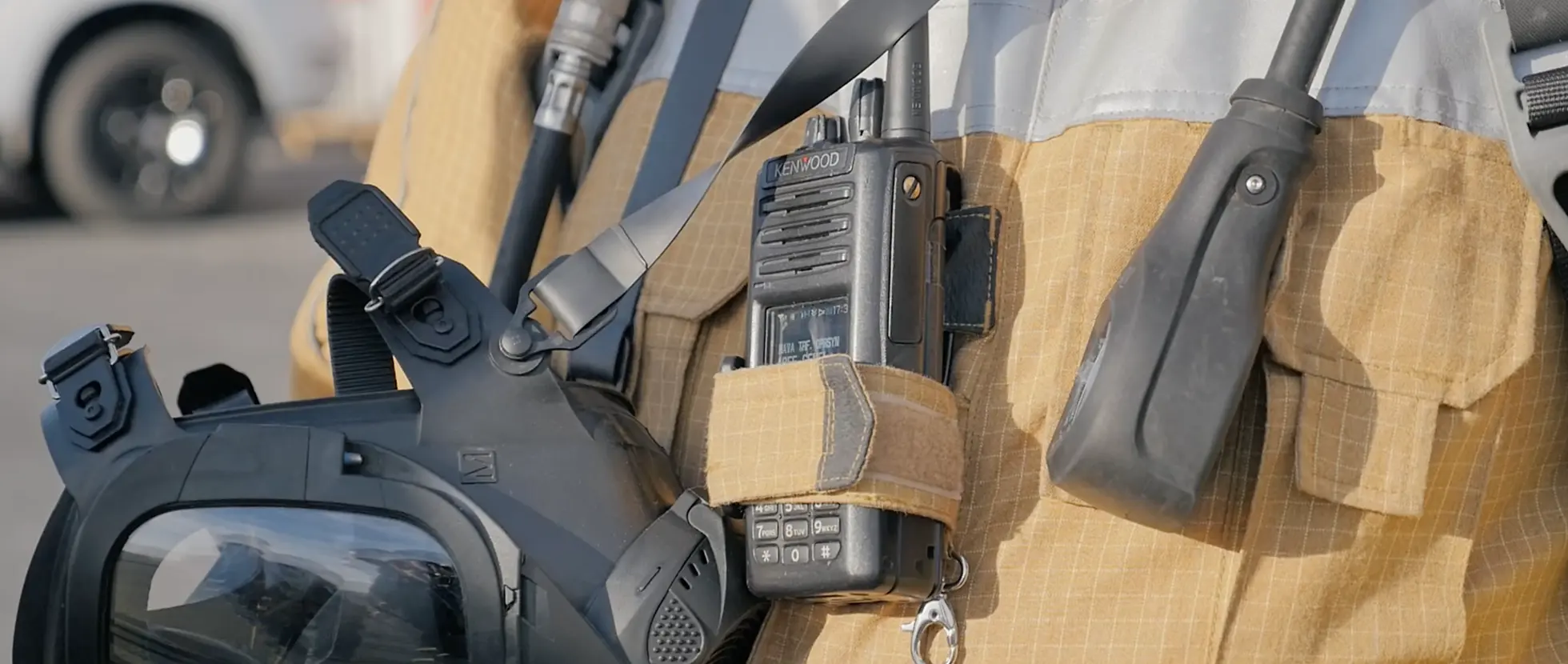The backbone of KENWOOD digital PAMR and SMR networks - Spectrum-efficiency, coverage, security, reliability and cost-effectiveness
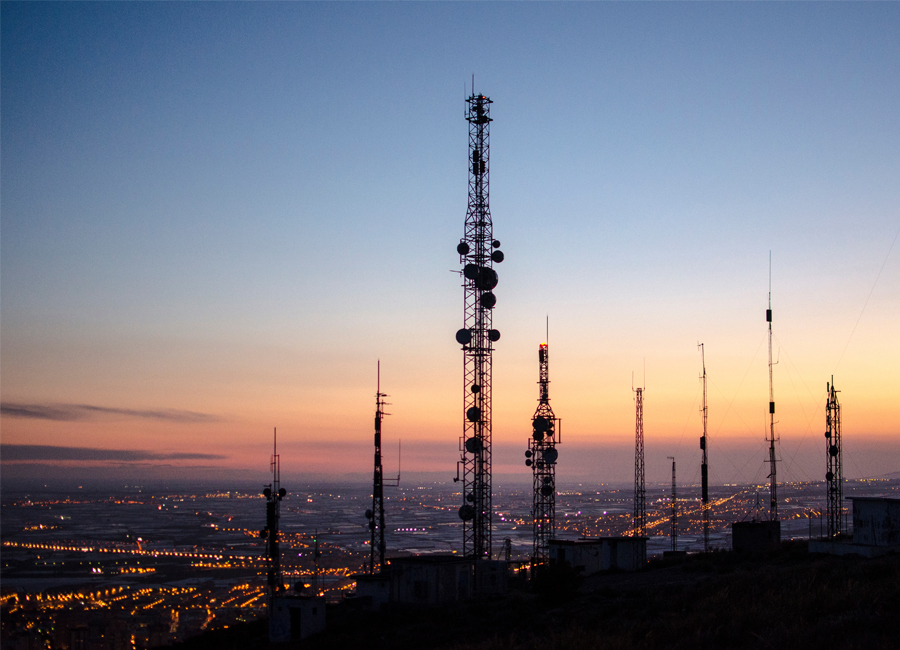
When you’re building a Public Access Mobile Radio (PAMR) or Specialized Mobile Radio (SMR) network, naturally cost and features are important considerations, but it’s reliability, resilience and 100% subscriber availability that define the most successful networks.
Updating an existing analogue PAMR/SMR network or building a new, digital network from scratch requires both investment and taking a long-term commercial view of the returns. Margins are tight, radio spectrum is limited and the market for subscribers is competitive, all of which has led network operators to focus only on those technologies and manufacturers that can offer scalable, reliable, resilient, feature rich and futureproofed networks, supported by software solutions and durable equipment to ensure 100% functionality and availability to subscribers.
THE CHOICE OF TECHNOLOGIES FOR PAMR / SMR NETWORKS
With the growing demand on radio spectrum from wireless devices, radio licensing authorities around the world are increasingly implementing a ‘narrow-banding’ strategy which shifts radio communication technologies from 12.5kHz frequency efficiency to 6.25kHz in order to reduce congestion and create additional capacity.
The two leading digital technologies being employed in new PAMR/SMR networks were specifically developed for narrow-banding and both Digital Mobile Radio (DMR) and Next Generation Digital Network (NXDN) technologies offer radio spectrum efficiency by employing different methods.
DMR is an ETSI compliant technology while NXDN is a recognised International Telecommunication Union (ITUR) international digital radio communications standard.
DIGITAL MOBILE RADIO (DMR):
DMR employs Time Division Multiple Access method which combine two communications streams into a single stream transmitted in interleaved time allocations or "slots".
DMR operates between the frequencies of 30 MHz and 1000 MHz (1 GHz), divided into two frequency bands:
Very High Frequency (VHF): Between 30 MHz and 300 MHz
Ultra High Frequency (UHF): Between 300 MHz and 1 GHz.
DMR’s two-slot TDMA method offers a cost-effective migration path from analogue FM, as it provides two talk paths within the same 12.5 kHz bandwidth, effectively doubling capacity. KENWOOD DMR radio devices enable up to two simultaneous direct-mode subscriber calls in a 12.5 kHz channel without the need for a base station or repeater.
NEXT GENERATION DIGITAL NETWORK (NXDN):
KENWOOD NEXEDGE NXDN employs Frequency Division Multiple Access method to provide two separate 6.25kHz channels which run concurrently.
NXDN operates between the frequencies of 136 MHz - 520 MHz, divided into three frequency bands:
Very High Frequency (VHF): Between 136 MHz and 174 MHz
Ultra High Frequency (UHF): Between 350 MHZ and 520 MHz
800/900 MHz bandwidth: Between 806 MHz and 941 MHz
NXDN FDMA digital 6.25 kHz offers 20% longer range, extending the coverage area by up to 50% as both the bandwidth and band-pass filters are narrower, resulting in an improved carrier-to-noise ratio (CNR) when compared to 12.5 kHz. The key benefit in wide area coverage systems is that NXDN requires fewer repeater sites to achieve the same coverage.
WHICH FREQUENCY BAND IS BEST FOR YOUR NETWORK?
The VHF and UHF frequency bands each have inherent strengths and weaknesses dependant on the coverage area of the PAMR/SMR network.
VHF frequencies in free space can travel almost twice as far as UHF but as the wavelength is approximately 1.5m wide compared to UHF at 0.46m. What this means in practical terms is that UHF signals are shorter and narrower than VHF which makes them better for use in and around buildings, in urban settings and densely wooded areas.
As general rule, if the PAMR/SMR system is targeting its services to subscribers operating in outdoor spaces with unobstructed line-of-sight, VHF is the better option, but if the network is aimed at users operating in areas characterised by physical obstructions, UHF is likely to offer a better solution with fewer coverage dead spots.
Ultimately, the choice of digital technology and frequency band will be largely driven by what you want to achieve from a PAMR/SMR network, system capacity, levels of redundancy required and the topography of the coverage area.
RADIO COMMUNICATION SYSTEM CONSIDERATIONS
Other key factors to consider when selecting the technology, system architecture and devices to be employed in a PAMR/SMR network include:
| Fit for purpose: |
PAMR/SMR network operators will typically bundle radio devices into the subscription cost. Radios ‘rented’ rather than owned by subscribers are likely to treated with less care, so it’s important that the equipment is fit for purpose and suitable for a wide variety of usage situations, for example:
- Ease of use even when wearing gloves
- Providing audio clarity in noisy environments
- Incorporate built-in and optional advanced worker safety features
- Compatibility with accessories to enable hands-free operation and hearing protection
- Long battery life between charges
- Durability of mechanical buttons and switches. The Push-to-talk(PTT) button for example is the most used component of a portable two-way radio and needs to work flawlessly in extreme conditions. The PTT buttons on KENWOOD radios have a measured PTT reliability in excess of 100,000 activations.
- KENWOOD portable radio devices are rated to IP54/55/67 and 68 and MIL-STD 810 C/D/E/F/G to provide protection against the ingress of dust, salt, grit and moisture and resistance to vibration and shock.
|
| Temperature: |
The ambient temperature range in which the subscribers will operate can pose a problem for effective, uninterrupted communication. This is because radio receivers are rated for a certain sensitivity, and if thermal noise is exceeded the result is a reduction in signal to noise ratio. It is therefore important that equipment is suitable for the conditions. KENWOOD portable radio devices are designed and tested to operate in a temperature range between -30°C and +60°C.
|
| Mean Time Before Failure (MTBF): |
The last thing a PAMR/SMR operator wants is an unacceptable level of devices being returned for repair or replacement as this not only disrupts the service to subscribers but also eats into profit margins. MTBF measures the average time it takes for a component failure. It is an good indicator of how reliable a product is measured in units of hours: the higher the MTBF value, the more reliable the product is. In tests, KENWOOD radios have achieved MTBF values of up to 40,000 hours making them ideal for use in PAMR/SMR fleets.
|
| Mixed Digital-Analogue Operation: |
KENWOOD DMR and NEXEDGE NXDN digital two-way radio devices are ideally suited to those PAMR/SMR operations upgrading from analogue to digital communications as all devices feature native and automatic analogue/digital mixed operation. This allows them to communicate automatically with existing analogue radios to provide a predictable and cost-efficient path to full digital implementation.
|
| System flexibility: |
KENWOOD DMR and NEXEDGE NXDN radiocommunication systems can be configured in conventional, IP, trunked, simulcast and multi-frequency formats.
|
| Centralised system management: |
Sophisticated DMR and NEXEDGE NXDN network system management software reduces operation and maintenance costs, offering features such as remote programming, firmware uploading, subscriber unit access management, monitoring and diagnostic capabilities.
Operators can monitor network traffic in real time for management and troubleshooting purposes. They can also download a detailed call activity report on any channel site, individual or group for traffic, security, and incident analysis. System Manager will graph peak usage and blocking statistics to identify possible system traffic and/or capacity issues.
|
| Repeater monitoring: |
KENWOOD DMR and NEXEDGE NXDN system monitor software provides operators with around-the-clock remote IP monitoring of all repeaters on a trunked or IP conventional network, alerting technical personnel to systemic problems or failures in any repeater at any site. In addition, the repeater monitor can be set to sound a PC alarm and send multiple emails upon receiving an alert, with all events recorded in a log file. This allows operators to bring back-up repeaters on stream quickly to maintain service availability to subscribers.
To monitor repeaters 24/7 wherever you are, KENWOOD offers a free Repeater Monitor App designed for iPhone/iPad devices. This IOS application provides both remote monitoring and connection to repeaters for further diagnostics and investigation.
|
| Intrinsically safe: |
If subscribers on your PAMR/SMR network include customers operating in environments where hazardous, combustible gases and airborne particles are present, you will need to make ATEX certified equipment available. KENWOOD NEXEDGE NXDN digital ATEX / IECEx hand portable radios are available in VHF and UHF versions and meet with the following standards:
ATEX Directive 94/9/EC:
- II 2G Ex ib IIC T4 Gb - Gas Protection
- II 2D Ex ib IIIc T110°C Db - Dust Protection
- I M2 Ex ib I Mb - Mining Protection
IECEx Scheme:
- Ex ib IIC T4 Gb - Gas Protection
- Ex ib IIIC T110°C Db - Dust Protection
- Ex ib I Mb - Mining Protection
|
KENWOOD RADIO COMMUNICATION SYSTEMS OFFER PAMR/SMR OPERATORS FLEXIBILITY WITH RELIABILITY
KENWOOD DMR and NEXEDGE NXDN technologies offer highly reliable and flexible, voice and data enabled digital conventional, IP, trunked, simulcast and multi-frequency communications systems which can be integrated with third-party applications including Status, SDM, GPS, GSM/SIP, Dispatch etc., so offer a resilient, failsafe and future-proofed communication solution.
For wider coverage areas featuring a host of built-in and programmable functions and advanced worker safety features, KENWOOD NEXEDGE NXDN and DMR digital systems offer much more than the ability to simply transmit voice and data instantly, including:
|
- Individual, group and all radio calls
- Advanced built-in and programmable user safety functions, including 'man-down' and emergency call
- Over-the-air programming
- Emergency alert functions
- Voice and data messages
- Optional and built-in GPS
- Native analogue/digital mixed operation
- Longer range/improved coverage
- Programmable automated alerts
- Encryption against interception and eavesdropping
- Coverage indoors and out, above and below ground
- Audit trails/monitoring/logging workforce activities
- Stun and Revive feature when radios are lost
|
- Flexibility to link multiple locations
- Scalable digital trunked, simulcast and multi-frequency operation
- Suite of application solutions including location services to tailor a system to meet specific operational requirements
- Exceptional audio quality
- Simple to programme and use
- Long battery life between charges
- Rugged and durable radio devices including intrinsically safe options
- Reliable and resilient RF coverage
- Integration with existing telecoms, dispatch and monitoring systems, AI implementation and IT
|
EXCEPTIONAL AUDIO QUALITY EVEN IN NOISY ENVIRONMENTS
KENWOOD radiocommunication devices benefit from JVCKENWOOD Group’s 60-years’ experience in producing consumer audio and visual equipment (Trio, JVC and KENWOOD), renowned for exceptional sound quality.
This transfer of knowledge and experience has led to the development of a number of novel and innovative solutions which overcome the problem of cancelling ambient noise while improving the audio clarity of the transmitted voice - in any operating environment.
| Ultimate noise cancellation: |
NX-5000 Series hand-portable radios achieve optimum noise cancellation with the use of two integrated microphones. The main microphone is situated closer to the desired source (front of the radio), while a second microphone in the rear of the radio receives the ambient noise. In a noisy environment, both microphones receive noise at a similar level, however, the main microphone receives the user’s voice more strongly. The processor in the radio subtracts one noise source from the other so that most of the ambient noise is cancelled which effectively enhances the quality of the transmitted audio of the user’s voice.
|
| Active Noise Reduction: |
Both NX-5000 and NX-3000 Series radios feature Active Noise Reduction (ANR). ANR serves to cancel the noise component of the collected audio to improve the transmitted audio quality.
Noise cancellation functions can be ‘Custom’ configured to adjust the vocoder, DSP, filters, specific noises etc. to suit the operating environment.
|
| Selectable Audio profiles: |
The received audio will sound different depending on the usage environment of the radio, characteristics of the device (such as the microphone to be combined with the radio and external devices), and the tone of voice and manner of speaking of the speaker. The received audio will also sound different depending on the output method, such as using the speaker of the radio or via an earphone, to hear the received audio. KENWOOD radios feature 6 customisable audio profiles which can be configured for specific scenarios and selected by the user to suit the operating environment.
|
ADDED VALUE LOCATION SERVICES
KAS-10 & KAS-20 AVL/Dispatch Suites
For applications requiring lower levels of automation, the basic KAS-10 or more advanced KAS-20 software suites empower KENWOOD DMR and NEXEDGE NXDN systems with AVL and Dispatch capabilities including dispatch and voice recording, fleet management, call logging and event sharing features.
COST-EFFECTIVE MIGRATION FROM ANALOGUE TO DIGITAL
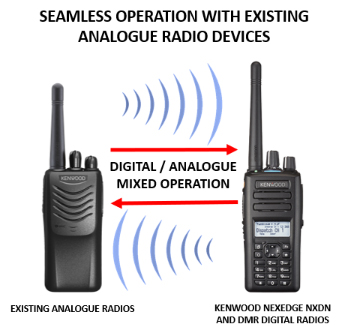 The beauty of a KENWOOD digital PAMR/SMR solution is that your investment in new equipment when upgrading from analogue can be phased over time as all KENWOOD digital radio devices feature native automatic analogue/digital mixed operation (which allows them to communicate automatically and virtually instantly with any existing analogue radios whatever the make without the need for scanning to establish a connection with an incoming analogue call) providing a predictable and cost-effective path to full digital implementation
The beauty of a KENWOOD digital PAMR/SMR solution is that your investment in new equipment when upgrading from analogue can be phased over time as all KENWOOD digital radio devices feature native automatic analogue/digital mixed operation (which allows them to communicate automatically and virtually instantly with any existing analogue radios whatever the make without the need for scanning to establish a connection with an incoming analogue call) providing a predictable and cost-effective path to full digital implementation
SECURITY & PRIVACY
As more products are connected by IP and to networked information and automation systems, there is a growing risk of leakage and theft of personal and other information, fabrication or destruction of data, and hijacking of products.
As one of the world’s leading manufacturers of radiocommunication products and solutions, we take our responsibility for ensuring the security integrity of our products and the data we hold on the systems developed on behalf of our customers. Click for more information on JVCKENWOOD’s Group Privacy Policy.
Product Security
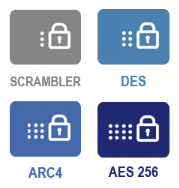 Secure encryption is an essential requirement in radiocommunications to provide security against eavesdropping, jamming and other malicious attacks on a radio system.
Secure encryption is an essential requirement in radiocommunications to provide security against eavesdropping, jamming and other malicious attacks on a radio system.
All KENWOOD digital radio devices are equipped with a voice scrambler feature as standard, while licensed NEXEDGE NXDN and DMR radios are further protected with more advanced encryption:
| PROTALK PMR446: |
Voice inversion scrambler
|
| NX-1000 Series: |
Built-in digital scrambler as standard, optional upgrade to ARC4 Encryption for DMR
|
| NX-3000 Series: |
Built-in digital scrambler as standard, optional 56-bit DES encryption and upgrade to 256-bit AES (NEXEDGE NXDN and DMR) and 40-bit ARC4 encryption for DMR
|
| NX-5000 Series: |
Built-in digital scrambler and DES-56 bit (4 keys) as standard, optional hardware upgrade to 56-bit DES and support to 256-bit AES
|
Information Security
The Communications Systems Business, Professional Systems Business and the Healthcare Business units of JVCKENWOOD Corporation are certified to ISO/IEC 27001:2013 international standards for information security management system and JIS Q 27001:2014 Japanese industrial standards, both of which specify standards for information security management systems and establish requirements and implementation of the framework to protect information assets.
BUILT TOUGH TO WITHSTAND RAIN, DIRT AND THE ROUGH AND TUMBLE OF FIELD USE
 As you would expect, all KENWOOD professional hand portable walkie talkies and mobile radios conform to MIL-STD-810 C/D/E/F/G for ruggedness and durability and are IP54/55/67 Water & Dust Intrusion rated, making them suited for use in any environment.
As you would expect, all KENWOOD professional hand portable walkie talkies and mobile radios conform to MIL-STD-810 C/D/E/F/G for ruggedness and durability and are IP54/55/67 Water & Dust Intrusion rated, making them suited for use in any environment.
In addition, KENWOOD can offer ATEX IECEx devices for use in hazardous, explosive atmospheres.
ACCESSORIES TO SUIT YOUR SUBSCRIBERS’ OPERATION
KENWOOD offers a comprehensive range of accessories for its professional two-way radio systems and devices including covert earpieces, remote mics, headsets, cables, connectors and software packages allowing you to tailor your equipment or system to precisely meet your subscribers’ operational requirements.
PROVEN PAMR / SMR RADIOCOMMUNICATION SOLUTIONS
KENWOOD trunked and conventional two-way radio solutions are widely used in PAMR/SMR around the world. From localised systems serving farming communities, security companies, small business, local fire brigades and forestry enterprises to wide area and national systems, including:
 |
PAMR network, Cape Town
The Nextalk network offers Voice, GPS tracking and Status Message capabilities. The inherent security offered by the NEXEDGE NXDN air access method is an important factor for a number of subscribers, particularly those involved in providing private security services.
Find out more ►
|
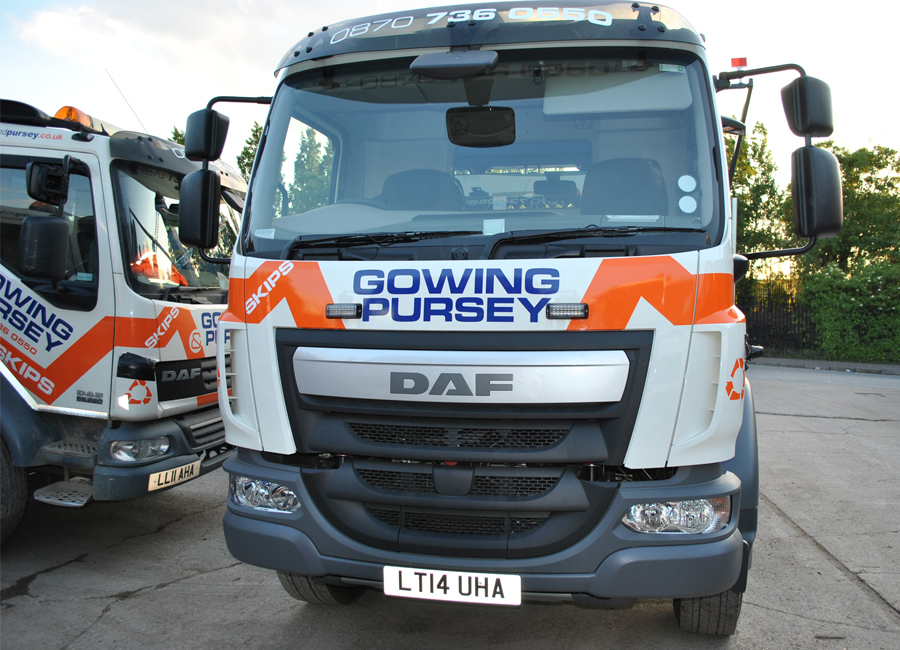 |
A PAMR Network that's serious about waste, London
RF Lincs operates a 5-channel, trunked NEXEDGE NXDN PAMR network providing coverage to an area of approximately 12 million m2 in Greater London. The system was ideally suited to meet the needs of private waste and recycling contractors in multi-drop operations.
Find out more ►
|
 |
SMR Network, California
Mobile Relay Associates (MRA) picked KENWOOD NEXEDGE NXDN as the backbone for its SMR network. MRA operates a leading-edge communications network from over 60 key sites around California, Nevada, Arizona and Utah.
Find out more ►
|
 |
PAMR Network, Sydney & Melbourne, Australia
Vertel is Australia's largest independent wireless network provider. Its Team Talk, fully managed communications system powered by KENWOOD NEXEDGE NXDN provides coverage in the Sydney and Melbourne metro areas, serving commercial and government organisations with secure, business-critical voice and data communications.
Find out more ►
|
 |
SMR Network, Chicago
A Beep is one of the largest SMR operators in Chicago, and its NEXEDGE NXDN based Diga-Talk service offers an automated system for transparent roaming employing IP networking to provide coverage throughout the city.
Find out more ►
|
 |
PAMR Network, Malaysia
Mal-Tel Communication has successfully implemented a digital trunked PAMR network in Malaysia employing NEXEDGE NXDN technology to meet with the Malaysian Communications and Multimedia Commission requirement for public trunking networks to switch from 800MHz to the UHF 410-430MHz band to solve congestion in the 800MHz band.
Find out more ►
|
EXPLORE KENWOOD SOLUTIONS
To discover more about the millions of Kenwood devices in use by countless customers in hundreds of applications around the world, including the innovative, multi-protocol NX-5000 Series (NXDN, DMR, P25 and FM Analogue), NX-3000 Series (NXDN, DMR and FM Analogue) and exceptional value offered by the entry-level NX-1000 Series hand portable walkie talkies and mobiles, please click on the banners below.
For more information on KENWOOD digital system solutions, including DMR Tier 3 trunking and Simulcast, NXDN Type-C, Type-D, and Gen2 trunking, click here.
Alternatively, please post an enquiry to us or contact an Authorised KENWOOD Communications reseller.
► Please complete our Enquiry Form or contact an Authorised reseller
for help with your project
QUICK LINKS
Please click the banners to explore your choice of technology and solution.







